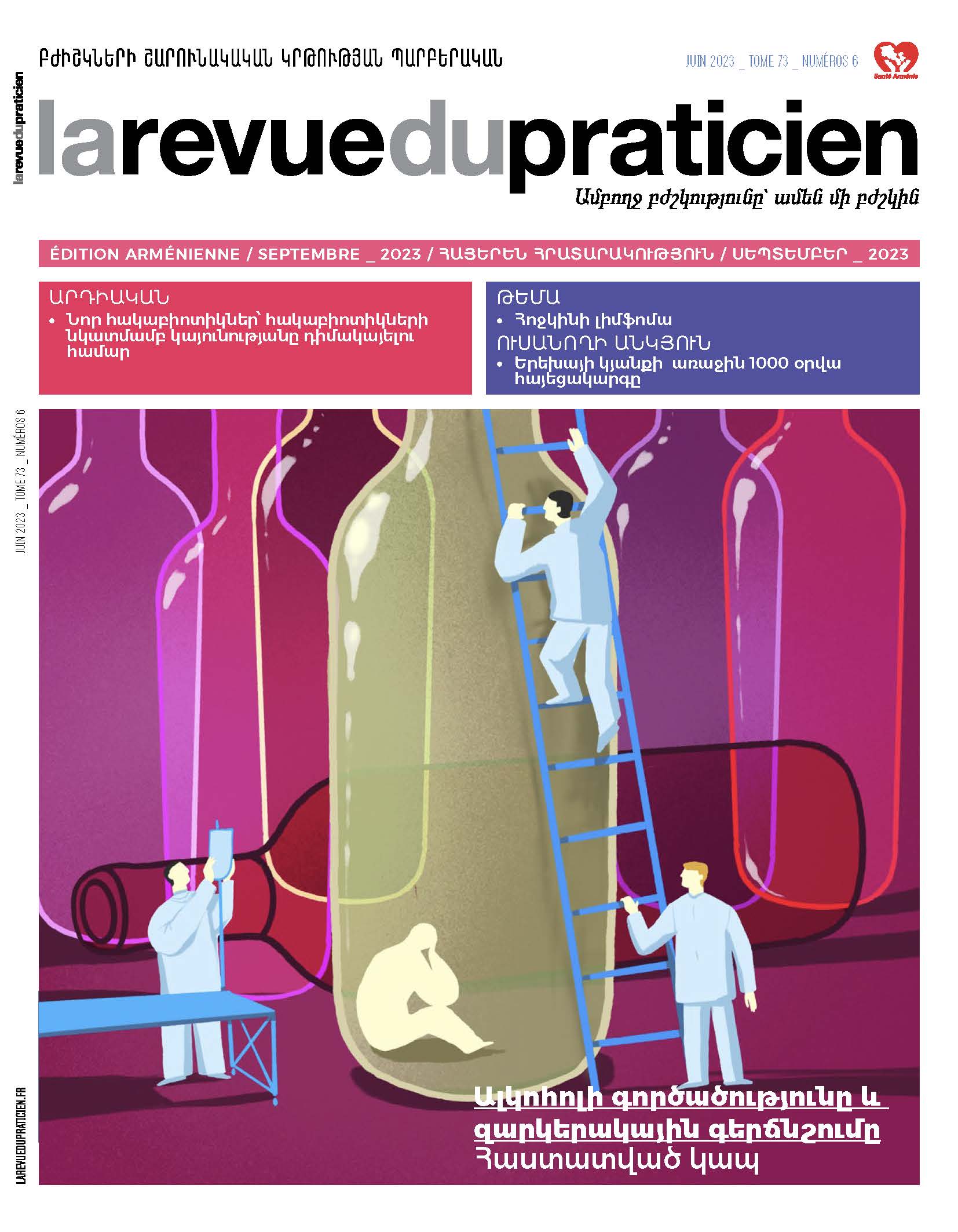Հոջկինի լիմֆոմայի ախտորոշումը և նախաբուժական գնահատումը 31
Hervé Ghesquières.Ամփոփագիր
Տարբերում են Հոջկինի լիմֆոմայի երկու ձև՝ դասական, որը հաճախադեպն է, և հանգուցային՝ լիմֆոցիտների գերակշռությամբ, որն ավելի հազվադեպ է և պահանջում է առանձնահատուկ բուժում: Դասական Հոջկինի լիմֆոմաների շարքում առանձնացվում են հյուսվածաբանական ենթատիպեր՝ հանգուցասկլերոզացնող, խառը բջջային, լիմֆոցիտներով հարուստ և լիմֆոցիտներից աղքատ։
Ախտորոշումը պահանջում է լավորակ բիոպսիա, որն առավել հաճախ ստացվում է ավշահանգույցի վիրահատական հեռացման ճանապարհով: Կլինիկական պատկերը մեծ մասամբ խիստ կարծրատիպային է, հատկապես՝ շատ երիտասարդ հիվանդների շրջանում՝ վերստոծանային ադենոպաթիաների առկայությամբ։
ՀԼ-ի աստիճանի գնահատման ժամանակ հիմնականում կիրառվում է պոզիտրոնային արտանետման շերտագրություն (ՊԱՇ)․ ներկայումս ոսկրածուծի բիոպսիա այլևս անհրաժեշտ չէ: ՊԱՇ-ը հնարավորություն է տալիս սահմանելու կանխատեսական խմբերը, ինչն էլ նպաստում է առավել ճշգրիտ բուժում ապահովելուն՝ պահպանելով ապաքինման դեպքերի բարձր մակարդակ և խուսափելով ուշ ի հայտ եկող հետևանքներից: Սրտի և թոքերի հետազոտություններից զատ, նախաբուժական գնահատումը ներառում է նաև պտղաբերության պահպանման և ամենատարեց հիվանդների ծերաբանական հետազոտության հարցերը:
MeSH.
Aged,
Hodgkin Disease/diagnostic imaging,
Hodgkin Disease/therapy,
Humans,
Neoplasm Staging,
Prognosis.
Հիմնաբառեր.
Հոջկինի հիվանդություն:
